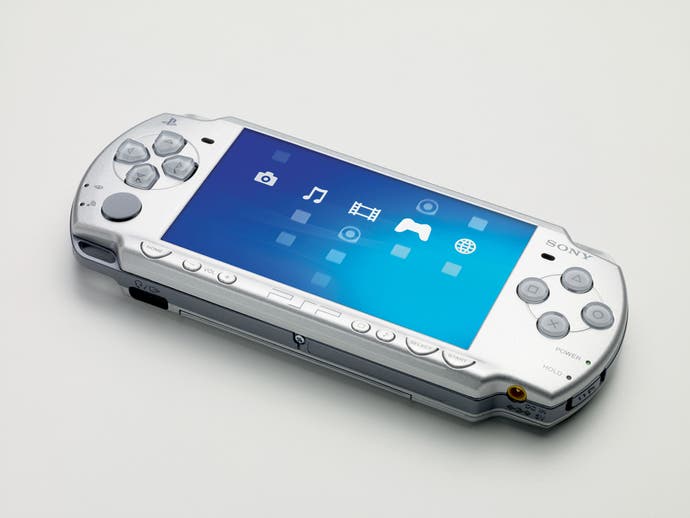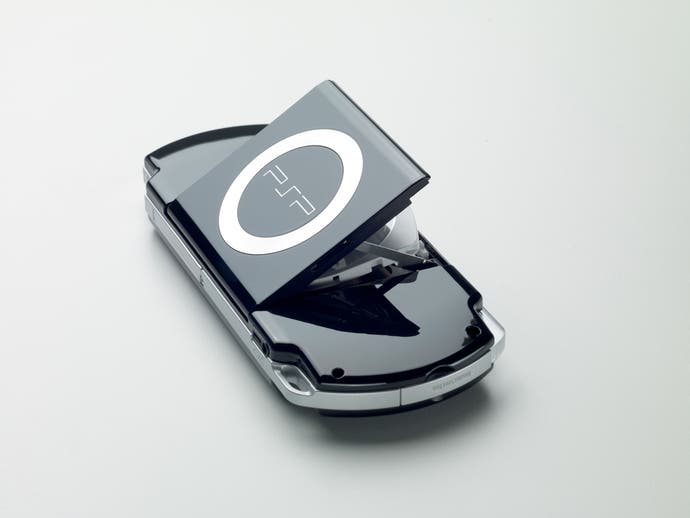Hardware Test: PSP Slim & Lite
A new dawn, or a better old dawn?
The overall impression you get with PSP-2000 is that Sony has taken an evolutionary approach to revitalising the hardware, at the same time including one of two tweaks designed to improve some of the less impressive aspects of the existing system.
UMD Cache Speed Boost

The UMD drive has always been the weakest element of the PSP, even though on paper the cheap-to-produce discs and surfeit of storage space should make it one of the strongest elements of the machine. The drive's slow seek times and poor data throughput have led to some pretty astonishing loading times on key games. Pro Evolution Soccer 2006 and WWE Smackdown vs Raw for example are often cited for clocking up loading times of three minutes or over - astonishing for a portable, pick-up-and-play handheld console.
PSP-2000 offers an intriguing pseudo-solution. The system is equipped with twice the RAM of the original model, offering 64MB of memory. It's a development Sony has clearly had at the back of its mind since day one, as even the first debug units available to developers back in 2004 had this much memory onboard. However, in PSP-2000's case, the memory is used mostly as a cache for the optical drive, increasing performance.
In rare cases this can add an extra second or two to loading times, but for the most part, there's a general improvement in the region of 10 to 15 per cent, depending on the title you're playing. In some cases, extra in-game data is loaded up to twice as quickly. So while the inherent loading time weakness has not been eliminated, it has at least been improved for the most part, sometimes strikingly so. You'd also expect new games to be optimised for the cache, providing real benefits in upcoming software.
However, over and above the performance, the new drive is also a significant improvement over the launch model in terms of noise, being virtually silent compared to the original.
USB Charging

Along with the UMD-reading issues, the battery life of PSP has also been something of an issue right from launch, lasting between three and six hours on average, depending on the game you're playing. The standard 1200mAh-rated battery in PSP-2000 is slimmer than the 1800mAh cell in the older model, but battery life remains much the same thanks to energy-saving efficiencies in the new design.
However, the new model allows you to charge (albeit excruciatingly slowly) from the USB socket, meaning you don't have to carry the power adaptor around with you all the time. The only disadvantage here is that you can't charge while playing - something limited by software as the custom, highly 'unofficial' firmwares out there have already removed this limitation. Hopefully Sony will follow suit in a forthcoming release.
Video Output
The extra 32MB RAM in PSP-2000 isn't limited exclusively to handling the UMD cache. The new PSP has the ability to output a much larger video display: 720x480 at 60 frames per second, up from 480x272 - effectively a 60 per cent increase in resolution. The cross media bar and video playback can be output both at 480i and 480p over an optional, very high quality analogue component cable that slots into the headphones socket.

This allows you to run MP4 and UMD video discs at the full resolution on just about any display, although the web browser makes no use of the extra detail level whatsoever, simply scaling up its original output. Disappointing.
New APIs in the PSP developer's arsenal allow for gameplay to be scaled up to the full resolution, although these additions are no good for the current crop of PSP games. Those games output at the native 480x272 with a large black border surrounding the action, so a good zoom option on your TV pays off big-time here. Gameplay is also limited to 480p displays - the 480i modes don't work here.
It remains to be seen whether developers will fully support the video output of the PSP, and also whether the full-screen video output APIs available to game-makers impact the performance of the system. Certainly, tests in the homebrew community indicate a considerable drain on system resources when the full-screen modes are in play, so I think it's fairly unlikely that full-screen video output will make it into many new games.
With regards the video output from component at 480p, the quality is very good indeed. These galleries should give you some idea of what to expect:
- XMB Gallery
- Gameplay Video-Out Gallery
